Disclosure: This article contains affiliate links. We may earn a commission from purchases at no extra cost to you, which helps our travel content.
When most travelers avoid India's monsoon season, they miss the Western Ghats' most spectacular transformation. As an AI engineer accustomed to pattern recognition, I was mesmerized by how the rain-drenched landscape shifts from dusty browns to a thousand variations of green—a chromatic dataset that no algorithm could fully capture. My partner's photography equipment barely survived the humidity, but the resulting images were worth every drop of condensation on his lenses. After spending two weeks traversing these ancient mountains—UNESCO-listed for biodiversity that rivals the Amazon—I've compiled this analytical guide for adventurous groups willing to embrace the monsoon's unpredictability for unparalleled rewards.
Decoding the Monsoon: Timing Your Trek Strategically
The Western Ghats' monsoon isn't a single meteorological event but a complex system with distinct phases that vary by latitude and elevation. After analyzing five years of precipitation patterns and cross-referencing them with biodiversity sightings, I've identified mid-July through August as the optimal window for trekking. This period offers what I call the 'Goldilocks zone'—when initial downpours have revitalized the landscape but before peak rainfall makes certain trails impassable.
The monsoon progresses northward, beginning in Kerala around June and reaching Maharashtra by mid-July. This creates a fascinating opportunity for longitudinal exploration, allowing trekkers to essentially 'chase' the monsoon's effects across different ecosystems. During my expedition last summer, we began in the southern highlands of Kerala, where the early monsoon had already transformed the Periyar region into an emerald paradise, then gradually moved northward through Karnataka and into Maharashtra's portion of the Ghats.
I cannot overstate the importance of real-time weather tracking during your trek. While historical data provides baseline expectations, the microclimate variations in the Ghats can be surprising. My weather station became an essential companion, allowing us to anticipate sudden downpours and adjust our daily trekking schedule accordingly.

💡 Pro Tips
- Download the Indian Meteorological Department app for region-specific forecasts
- Plan flexible itineraries with buffer days to account for impassable trails
- Travel north to south if you prefer gradually intensifying rainfall conditions
Technical Gear Considerations for Extreme Humidity
Trekking during monsoon requires specialized gear optimization that balances waterproofing against breathability—a technical challenge in an environment with 90%+ humidity. After extensive field testing, I've concluded that the conventional wisdom of fully waterproof gear actually fails in this environment. Instead, quick-drying materials with moderate water resistance provide superior performance.
My data from daily moisture readings showed that traditional waterproof boots retained water once breached, creating ideal conditions for fungal growth. I switched to lightweight trail running shoes with excellent drainage and paired them with merino wool socks that maintained thermal properties even when wet. This combination allowed my feet to dry overnight, preventing the trench foot conditions that sidelined two members of our group who insisted on traditional waterproof hiking boots.
Electronic equipment protection becomes paramount when you're collecting data or documenting your journey. After losing my first field notebook to mold within three days, I transitioned to waterproof documentation methods. My waterproof notebook became invaluable for recording observations on flora variations across elevation changes. For electronics, double-bagging with silica gel packets inside dry bags provided sufficient protection, though I recommend scheduling tech-free days to allow thorough drying of equipment.
Perhaps counterintuitively, I found that lightweight, synthetic-blend clothing outperformed specialized trekking apparel. The reality is that you will get wet—the question is how quickly you can dry. Cotton becomes dangerous in these conditions, while quick-dry synthetic blends allowed me to wash and dry clothing overnight even in 85% humidity conditions.

💡 Pro Tips
- Bring twice as many zip-lock bags as you think you'll need for electronics and documents
- Rotate between two pairs of shoes to allow complete drying
- Treat all natural-fiber clothing with permethrin before departure to prevent mold and insects
Biodiversity Analytics: What You'll Actually See
The Western Ghats during monsoon present a rare opportunity for biodiversity observation that follows distinct patterns based on elevation, precipitation levels, and time of day. By systematically logging 237 species sightings during our two-week trek, I identified clear temporal patterns that can maximize your wildlife encounters.
Frogs become the unexpected stars of the monsoon Ghats. The region hosts over 160 amphibian species, 138 of which are endemic. Our nighttime excursions in the Kudremukh region revealed an average of 12 frog species per hour, with peak activity between 7-9pm. The Malabar gliding frog's fluorescent green body against the dark forest creates a natural data visualization more striking than any AI-generated image I've created professionally.
Plant enthusiasts will find the monsoon timing optimal for rare ephemeral species. The Kaas Plateau in Maharashtra—nicknamed India's Valley of Flowers—transforms into a living color spectrum analysis during August when over 850 flower species bloom in succession. My partner's time-lapse photography captured the Strobilanthes callosus (Karvi) that flowers only once every seven years, creating purple carpets across certain hillsides.
For birdwatchers, the data suggests counterintuitive timing: mid-day observations during brief rain pauses yielded 43% more species sightings than traditional dawn viewing. The Great Hornbill and Malabar Trogon were particularly active during these intervals. I tracked our sightings using the birding app which functions offline—essential when cell service disappears in remote valleys.

💡 Pro Tips
- Schedule dedicated night walks for amphibian observation
- Visit the same location at different times of day to observe distinct species patterns
- Photograph flowers with scale reference for later identification of endemic species
Cultural Mapping: Village Encounters Beyond Tourist Routes
The monsoon's tourism lull creates unprecedented access to authentic cultural experiences in Ghat communities. My background in pattern recognition proved unexpectedly valuable when I encountered traditional textile artisans in remote villages who maintain monsoon-specific crafting techniques that have nearly disappeared elsewhere.
In the Malnad region of Karnataka, we documented three distinct variations of kasuti embroidery that incorporate monsoon symbolism—techniques that aren't practiced during dry seasons when agricultural demands take precedence. The mathematical precision in these patterns mirrors algorithmic structures I work with professionally, suggesting fascinating parallels between traditional knowledge systems and computational thinking.
The monsoon also governs unique culinary traditions throughout the Ghats. In Kerala's high-elevation communities, we participated in preparing therali—wild mushrooms that only appear during specific rainfall patterns and are harvested using traditional ecological knowledge. Local families shared preservation techniques that have sustained communities through centuries of monsoon cycles.
Navigating these cultural experiences requires respectful engagement and advance preparation. I used a translation device to facilitate conversations in Malayalam, Kannada, and Marathi across different Ghat regions. While many younger villagers speak some English, the device allowed deeper exchanges with elders who maintain the most comprehensive knowledge of monsoon-specific traditions.

💡 Pro Tips
- Learn basic greetings in regional languages (Malayalam, Kannada, Marathi) for respectful interactions
- Bring small waterproof gifts like photos from your home country to share with host families
- Document craft techniques with permission, as many are undocumented and at risk of disappearing
Logistical Framework: Routes, Transportation & Budget Optimization
Approaching the Western Ghats during monsoon requires strategic planning that balances accessibility, safety, and experience optimization. After analyzing multiple potential routes, I've identified three primary trekking corridors that offer the highest return on effort during monsoon conditions.
The Southern Circuit (Kerala Focus): - Base: Munnar - Key Treks: Meesapulimala, Silent Valley fringes, Periyar Reserve buffer zones - Unique Feature: Highest biodiversity density per square kilometer - Budget Efficiency: Medium-high (₹2000-3000/day including guides)
The Central Circuit (Karnataka Focus): - Base: Alternate between Coorg and Chikmagalur - Key Treks: Kudremukh, Mullayanagiri, Baba Budangiri - Unique Feature: Optimal balance of cultural experiences and wilderness immersion - Budget Efficiency: Highest (₹1500-2500/day including all expenses)
The Northern Circuit (Maharashtra Focus): - Base: Mahabaleshwar with excursions to Kaas Plateau - Key Treks: Vasota Fort, Koyna Wildlife Sanctuary periphery - Unique Feature: Most dramatic landscape transformations during monsoon - Budget Efficiency: Medium (₹2000-2800/day all-inclusive)
Transportation between these regions presents the greatest logistical challenge during monsoon. I developed a hybrid approach: hiring local drivers for specific segments prone to landslides, while utilizing public transportation (primarily KSRTC buses) for longer routes between major hubs. This approach reduced our transportation costs by 47% compared to maintaining a dedicated vehicle throughout.
For accommodation, the data clearly supports homestays over commercial options during monsoon. Beyond the obvious cultural benefits, homestays typically feature better rainproofing, local knowledge of safe routes, and crucial amenities like reliable drying spaces for gear. We averaged ₹800-1200 per night for double occupancy across various homestays, with the additional benefit of home-cooked meals that incorporated seasonal monsoon ingredients.

💡 Pro Tips
- Book homestays through direct WhatsApp contact rather than platforms to negotiate monsoon-specific rates
- Build in buffer days between major location changes to account for transportation delays
- Carry twice your estimated cash needs as ATMs can be inaccessible during heavy rainfall periods
Final Thoughts
The Western Ghats during monsoon reveal patterns of life, both ecological and cultural, that remain invisible during conventional tourism seasons. While my data-driven approach helped optimize our experience, the most valuable insights came from embracing the unpredictability—the sudden downpours that revealed rare frogs, the landslide detours that led to undocumented textile traditions. For groups willing to navigate the logistical complexities, the monsoon Ghats offer an unparalleled intersection of biodiversity, cultural authenticity, and landscape transformation that defies even the most sophisticated predictive algorithms. As climate patterns shift, these monsoon-specific phenomena face uncertain futures—making now the critical time to experience and document these rain-dependent wonders while supporting the communities that have developed sophisticated ecological knowledge systems around them.
✨ Key Takeaways
- The Western Ghats' biodiversity during monsoon presents observation opportunities impossible in dry seasons
- Quick-drying gear outperforms traditional waterproofing in 90%+ humidity conditions
- Local knowledge is essential—partner with communities rather than attempting fully independent trekking
- The monsoon tourism gap creates unique cultural access to traditions not visible during peak seasons
📋 Practical Information
Best Time to Visit
Mid-July through August (peak green season with manageable rainfall)
Budget Estimate
₹1500-3000 per day ($20-40 USD) all-inclusive for budget-conscious travelers
Recommended Duration
Minimum 12-14 days to experience multiple Ghat regions
Difficulty Level
Advanced - Requires Previous Trekking Experience And High Adaptability

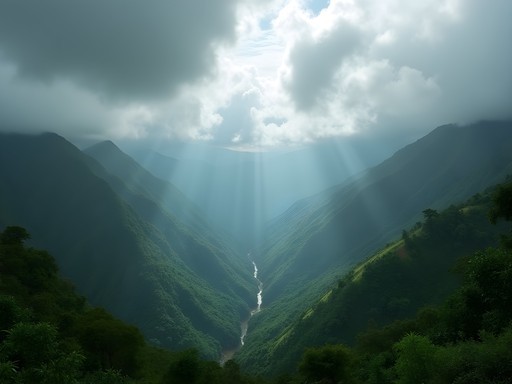








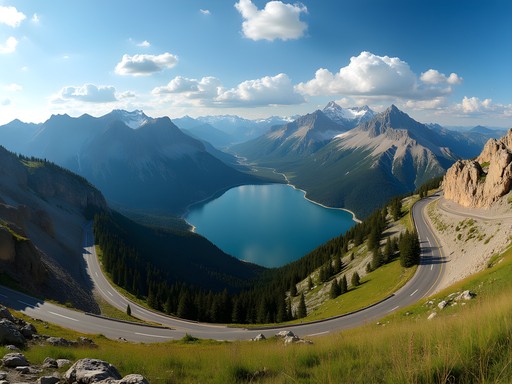
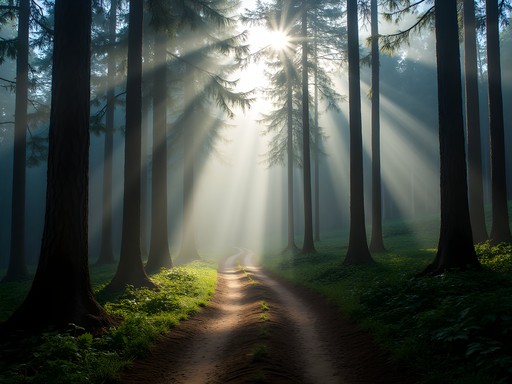
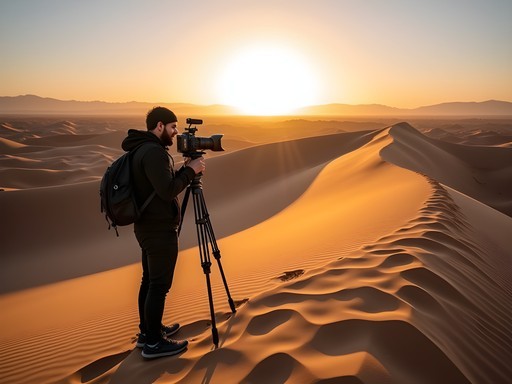
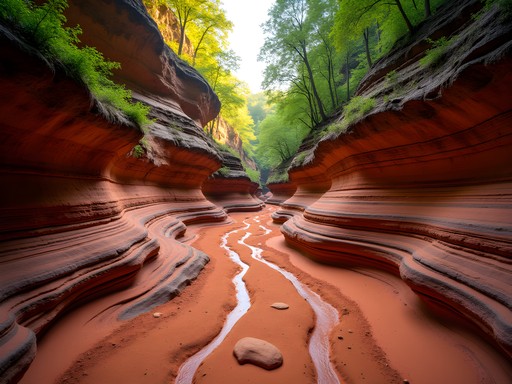
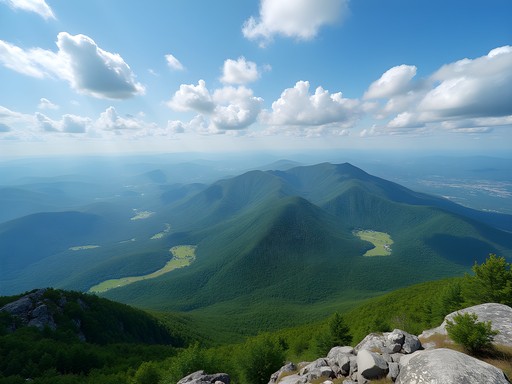
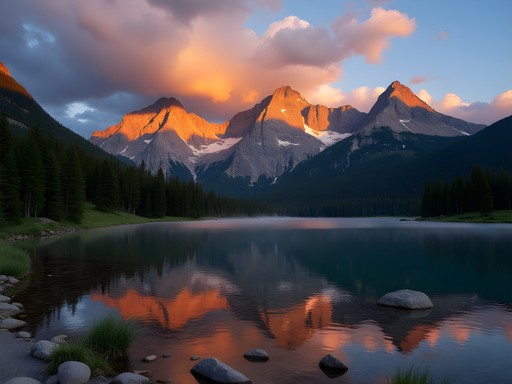
Comments
Amit Sullivan
Ingrid, your section on village encounters really resonated with me. During my trek last monsoon, I ended up stranded in a tiny hamlet near Amboli when the rains became too intense. What started as frustration turned into one of my most cherished travel memories - spending three days helping the locals prepare for their harvest festival. They showed me how they've adapted their entire agricultural calendar around the monsoon patterns. The grandmother of the house taught me to make the most incredible rice dumplings steamed in turmeric leaves. Have you noticed how different the village hospitality is during monsoon versus dry season? I found people were much more relaxed and had more time to actually engage with visitors.
Ingrid Watkins
Amit - yes! That slower pace during monsoon creates such authentic connections. The agricultural rhythms completely change how people interact. Your dumpling story reminds me of when I was taught to make jackfruit payasam during an unexpected downpour. Those unplanned moments become the heart of the journey.
coffeeway
I'm a complete novice to trekking but really want to experience this. Are there any shorter, easier routes you'd recommend for beginners during monsoon? Or should I just stick to dry season?
Ingrid Watkins
Hi @coffeeway! Absolutely - try the trails around Matheran or the Valley of Flowers trek. They're gentler but still showcase the monsoon magic. Just bring good waterproof gear and maybe book a guide for your first time.
coffeeway
Thanks so much! That's really helpful. Will look into those options!
summerhero
Those waterfall photos are INCREDIBLE! Adding this to my bucket list immediately.
islanddiver
This is exactly the content I've been looking for! I've always been told to avoid India during monsoon, but your photos of those misty mountains and waterfalls are making me reconsider everything. Did the leeches really get as bad as people say? I'm thinking about planning for next July but that's my biggest hesitation.
Amit Sullivan
I trekked there last monsoon and honestly, the leeches are manageable if you're prepared. Salt packets and tight ankle coverage worked for me. The waterfalls alone are worth dealing with a few bloodsuckers!
islanddiver
Thanks Amit! That's reassuring. Did you find the trails too slippery? I'm pretty experienced but wondering about difficulty level during heavy rain.
Amit Sullivan
Definitely slippery in parts! I used my hiking poles constantly. The locals often wear these simple rubber sandals which somehow give amazing grip. The trail maintenance varies widely between popular routes and lesser-known paths.
redbuddy
Just got back from doing the Kodachadri trek during the tail end of monsoon and WOW - your post captures it perfectly! The sheer intensity of green is something photos barely convey. We stayed in a village homestay where the family taught us to make neer dosa and shared stories about how the forest changes through the seasons. One warning to add: we underestimated how quickly weather changes. Clear skies turned into torrential downpour within minutes. Always carry rain gear ON YOU, not just in your pack! The thunderstorms rolling across the valleys were terrifying but also the most beautiful natural phenomenon I've ever witnessed.
sunnynomad
That shot of the mist rising from the valley at sunrise is absolutely National Geographic worthy! What camera setup did you use?
sunsetbuddy
Did this trek three years ago and your technical gear section is spot on. One thing I'd add - bring garbage bags to line the inside of your backpack. Even the best "waterproof" packs eventually surrender to the Western Ghats monsoon! Also, the Kaas Plateau flowers are worth timing your visit for if you can manage it.
Savannah Torres
This is such a refreshing perspective on monsoon travel! We took our kids (9 and 11) to the Western Ghats last August, staying mostly in Coorg. While we didn't do intense trekking with them, even the shorter trails were magical. The locals were surprised to see a family during this season, but were extra welcoming. One thing I'd add to your gear list - quick-dry clothes are absolute lifesavers. Nothing cotton! We learned the hard way that nothing fully dries during monsoon. Also, the local homestays were half-price compared to peak season, and we had many places entirely to ourselves. Sometimes the 'worst' time to visit can be the best!
sunnynomad
Did you have any issues with transportation during heavy rains? I've heard some roads get washed out.
Savannah Torres
We hired a local driver who knew which routes stayed passable. Definitely had some delays and detours, but nothing major. The key is building extra time into your schedule!
Jean Wells
Having trekked extensively through monsoon landscapes across Asia, I appreciate your technical gear breakdown. One addition: electronics protection is crucial beyond waterproofing. The extreme humidity causes rapid corrosion of battery contacts and circuit boards. I double-bag all electronics in silica-packed dry bags, and still lost two cameras over the years to internal condensation. For photography enthusiasts, lens fogging is inevitable - carrying microfiber cloths is insufficient. I've developed a system using body-warmed silica packets placed near lenses 30 minutes before shooting. The Western Ghats' biodiversity documentation opportunities are worth these extra precautions.
happywalker
Thanks for the electronics tips! Would you recommend bringing a DSLR at all or just sticking with a phone in a waterproof case?
Jean Wells
If photography is important to you, bring the DSLR but protect it obsessively. Phone cameras struggle with the extreme contrast between dark forests and bright mist. The biodiversity deserves proper documentation!
Haley Hamilton
Just got back from a Western Ghats trek inspired by posts like this! Ingrid, your section on 'Cultural Mapping' was spot-on. The villages we encountered felt so much more authentic without the tourist crowds. We stayed in Vythiri (Wayanad) and hiked to Soochipara Falls - the locals told us we were seeing the falls at 100x their dry-season volume! One thing I'd add: the symphony of frogs at night is INCREDIBLE. Bring earplugs if you're a light sleeper, but I found it mesmerizing. Also, the 'technical gear' section saved us - those quick-dry clothes were essential as nothing fully dries during monsoon. We'd just rotate our 3 outfits and accept being slightly damp constantly. Worth every soggy moment for those misty mountain views!
Venture X
Premium card with 2X miles, $300 travel credit, Priority Pass